(Note: this is a work in progress—check back frequently as we update this page!)
Mint error coins can occur in many different ways, and come in all shapes, sizes, and with countless combinations and variations. Mint's are factories, and like all factories, the machinery breaks, people make mistakes, and all of it can result in improperly minted coins. Although there are many ways in which a coin can have an "error", the errors all have definitions (although, new mint error types are discovered form time to time, particularly as the Mint's equipment changes!)
Below, you will see a partial list of some of the mint error types commonly encountered. Of course, the list is not exhaustive, but it includes many different types. We will continue to add to this list over time, so check back often!
PLANCHET ERRORS
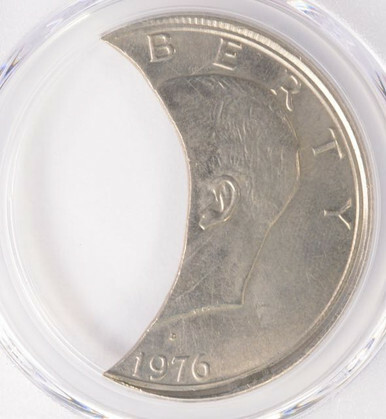
Clipped Planchet: Curved Clip
A curved clip occurs in the blanking press when the sheet of planchet strip is not advanced forwards far enough after having previously punched out blanks. If the blanking press overlaps those previously punched out holes in the strip, the result will be blanks with curved clips in them. When those blanks are struck, the resulting coins will have curved clips on them. Probably the most common of all clip types.
Clipped Planchet: Disc Clip
This clip is defined as being a clip so small, it can only be seen on the rim or in the "shift" of metal on the edge, but which does not effect the coin's diameter in any way. So for example, you might see a small dimple of metal missing on the rim, but this type of mint error coins would still be perfectly "round." On a clad coin , you will see a visible "shift" in the layers of metal on the edge where the disc clip is, but the coin will still be completely round.
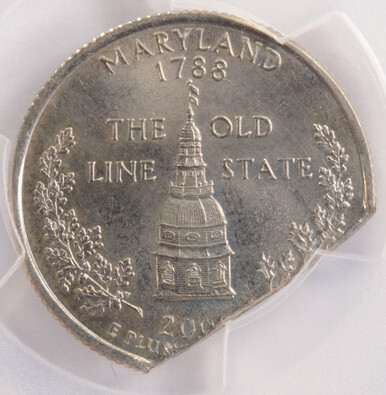
Clipped Planchet: Straight Clip
A straight clip occurs when the blanking dies punch out blanks from one of the 4 edges of the planchet strip in such a way that they overlap one of the edges of the planchet strip. The punched out planchet will have a straight clip. One of the most common clip types.

Clipped Planchet: Outside Corner Clip
If the blanking dies overlap one of the 4 corners of the planchet strip, the result will be an outside corner clip. The coin will have an approximately right angle shaped clip protruding from the coin. A rare clip type.
Clipped Planchet: Inside Corner Clip
This is a clip, sometimes referred to as an "assay clip", which is usually shaped somewhat like a "corner" or right angle-shaped piece of metal is missing from the coin. It is the rarest type of clipped planchet, and very few are known. This clip occurs when a piece of metal was "snipped" from the planchet strip for testing or for other purposes. A planchet punched from that segment of the strip will have a snipped out area of planchet. To qualify as the clip type, the clip must have a generally "right angle" appearance to it.

Clipped Planchet: Elliptical Clip
An elliptical clip is a coin which is struck on an "elliptical" shaped planchet. It occurs when planchet strip is not being fed properly into a blanking press, and when the punches come down onto the strip, they do not completely punch out a blank, instead creating a round circle in the planchet strip. Then, the strip doesn't move forward far enough, and the press punches (successfully) a blank out of the strip, but in such as way as to partially overlap the previously punched area, creating an incomplete clip.
The elliptical shaped blank come from the overlapped, incomplete clip area that is an "elliptical shape", and is formed when the incomplete clip breaks into two pieces (to better understand this, look at an incomplete clip's definition and photo.)
The error is a close relation to the incomplete clip, but is different in that when the incomplete clip is made, instead of staying together as a single coin, it breaks into two pieces, with one piece being an elliptical clip, and the other piece being a major curved clip. The elliptical piece is where "elliptical clips" come from.
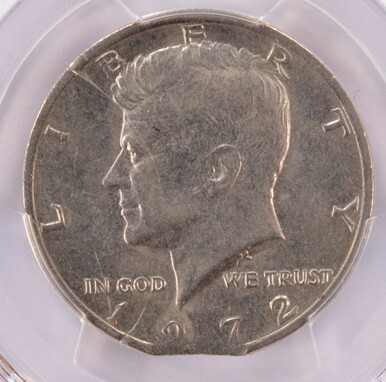
Clipped Planchet: Incomplete Clip
This error occurs when the blanking press is punching out blanks, and does not punch all the way through the planchet strip. Then the planchet strip is not advanced forward all the way, and the blanking press then (successfully) punching out blanks which overlap the previously partially punched out blanks. The resulting blanks will have an arching line across both sides of the coin. Examples are known with multiple incomplete clips on the same coin.

Clipped Planchet: Ragged Clip
A ragged clip occurs when a blank is punched from one of the 4 sides of planchet strip that was not properly trimmed, and has a rough, ragged area. The other way, is if the blanks are punched from a ragged area of defective planchet within the central area of the strip. When blanks are punched out so that they overlap one of the ragged edges of strip or a ragged area within the strip, the result will be a ragged clip. Ragged clips are one of the most common clip types.

Clipped Planchet: Crescent Clip
A crescent clip is a coin with a curved clip, which is missing at least 60% of the coin by weight. A cent that normally should weight 3.1 grams, would need to have a curved clip that bring the coin to a weighs of 1.24 grams or less in order to qualify as a "crescent clip." Crescent clips are generally scarce.

Clipped Planchet: Bowtie Clip
A bowtie clip is a coin with at least 2 curved clips that are very close together to make the coin look like the shape of a "bowtie." Bowtie clips usually have 2, 3, or 4 clips on them, but to qualify as a bowtie, two of the clips must be opposite each other an sizable enough to make the coin have a obvious "bowtie" shape." The most desirable bowties have 4 clips that are close together.

Defective Planchet: Defective planchets are coins with missing or poorly made areas of their planchet. They are random, irregular, and sometimes comprise multiple other error types, and therefore do not fit well into another single planchet error category. This is a broad category, and one which is used for coins struck on planchets which have errors that cannot be easily put into another category of planchet error. A coin with an irregular shaped area of missing planchet, and with laminations, for example, might well fit into this category.

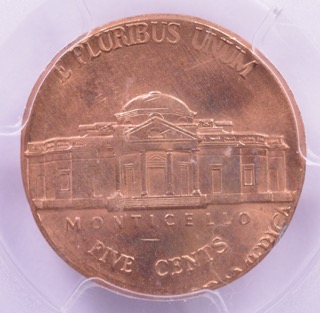
Off-Metals (wrong planchets)
An off-metal (sometimes called a wrong planchet) is a coin struck on a planchet other than what it was intended to be struck on. The example coin about is a nickel struck on a Lincoln cent planchet. The metal and weight of the coin can be used to determine what planchet an off-metal is struck on. Off-metals almost always are coins struck on the same or smaller size coin's planchet (for example, a cent can be found struck on a dime planchet, but it is highly unlikely to find a dime struck on a cent planchet--this is because the planchet generally must be able to fit into the host coin's press.)
Off-metals are one of the most popular mint error types due to their dramatic appearance, rarity, and their interesting "story" as to what they are and how they are made.
DIE ERRORS
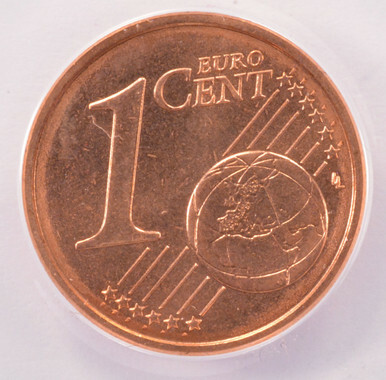

(Above: Euro 1c struck with two reverse dies)
MULE
A mismatched set of dies that struck a coin. A collar die counts, but must be designated as a collar mule. Mule errors can be two different designs of the same series of coin, or of a difference series of coin matched together. It can even be a foreign coin die matched with a domestic coin die.
A mule’s “denomination” is determined by which die’s planchet the coin is struck on. If the coin has a cent obverse, and a dime reverse, but is struck on a cent planchet, it is a “cent.”
STRIKING ERRORS
BROCKAGES: Brockages, simply put, are coins which are struck with another coin, with the coin creating a design of some sort on the coin. There are many types of brockages.
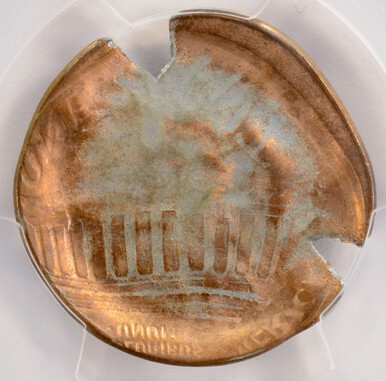
FULL BROCKAGE:
A brockage which covers the entire coin on one side (obverse or reverse.) A full brockage can be any stage of brockage (1st strike, early stage, late stage, etc.) It's simply a coin with a brockage covering the entire side of a coin.

PARTIAL BROCKAGE
A coin with only part of the coin's design exhibiting a brockage. This can be anything from 1%-99%. Partial brockages are usually 1st strike brockages, and are from another coin lying on top of them when struck, creating a "brockage" where the coin's overlapped.

MIRROR BROCKAGE
A 1st strike brockage which (when the coin is flipped over) is a "mirror image" of the design on the opposing side. It can occur on either the obverse or reverse design, and can be a full brockage or an off-center brockage (on an off-center coin, that is) and which has little or no distortion in the brockage itself.
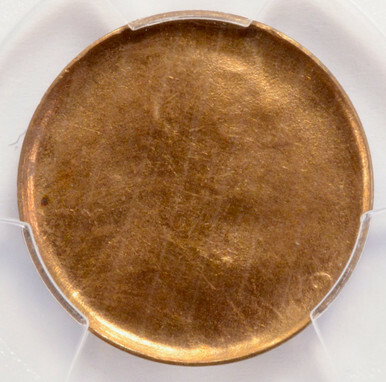
COUNTERBROCKAGE
A counterbrockage is a coin which was struck with a coin that had a brockage on it. This means that a coin which had a brockage on it, struck this coin, creating a counterbrockage.
The difference between this and a "normal" brockage is primarily that a counterbrockage will be “raised” and have the design elements in the correction orientation (e.g. Lincoln's design on the coin shown is facing the correct way, and the lettering is all the correct direction) as a normal coin would.
Additionally, counterbrockages always have some of the design elements missing off the coin’s face, which is due to the counterbrockage-maker spreading out when it is was struck into the coin. Typically, some of the outer lettering or part of the date will be missing. If it’s a very late stage counterbrockage, there may be only portions of the central design on the coin, with the underlying design starting to “show through” the counterbrockage strike.
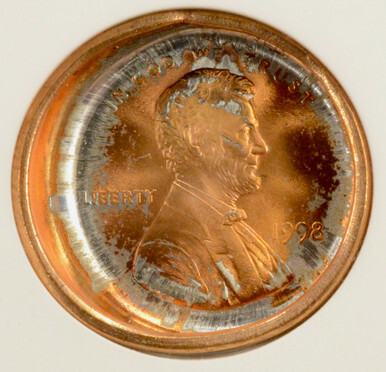

DIE CAP (obverse/hammer die)
An obverse die cap begins when a coin is struck and then sticks to the hammer (upper die in a press) die. It then proceeds to be struck into one or more coins and will begin to “cap” around the die’s upper “die neck.” Typically, the coin will strike multiple coins, and with each coin it strikes the metal will flow upwards around the die neck and for “cap walls.”
Sometimes the cap walls will be quite high, although they also can be shallow. The higher the cap walls, the more desirable the coin is.
Although they are called “obverse die caps”, this has to do with the fact that they are occurring on the hammer die. Die caps that occur on the hammer die are distinctly different from dies that occur on the anvil (typically the reverse) die. So to be a “obverse die cap”, the obverse die does not have to be the die that the die cap formed onto, but instead has to have the characteristics of a obverse (hammer) die cap, including characteristics such as high cap walls, a more “flat” and “squared” base of the die cap (similar in appearance to the bottom of a typical bucket.) Sometimes the reverse die was used as the “hammer die”, and will have the high cap walls around the coin design. Whichever design it it, if the coin has the high cap walls characteristic of a coin that wrapped around the hammer die, and the more squared off based of the cap, it is an “obverse die cap.”

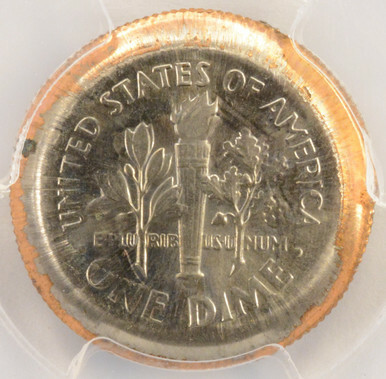
DIE CAP (ANVIL/REVERSE DIE)
A reverse die cap occurs when a coin sticks to the reverse (anvil) die after being struck and is then struck into incoming planchets. As long as it struck at least one coin after having adhered to the die, and has started to form a “cap”, it can be called a reverse die cap.
Reverse die caps will always have a shallow cap wall, typically only slightly above the surface of the coin. Also, they tend to spread out, often to far larger than normal. This is because the metal spreads “outwards” on reverse die caps.
Reverse die caps are almost always on the “reverse die”, which means that the coin stuck to the die and began to form a “cap” around the reverse die. On some occasions a obverse die has been installed as the anvil die (lower or “stationary” die in a coining press), and in that case it would still be termed a “reverse die cap.”

DIE CAP STRIKE (CAPPED DIE STRIKE)
This is a coin struck with a die cap (see the definitions for die caps) instead of a normal die’s surfaces creating either a strike with brockage or a strike without any design (depending on the type of die cap that struck it.) Die cap strikes are also known as “capped die strikes.” One indentifying trait of die cap strikes, is that they will cover the entire coin’s surfaces evenly. There is an even consistency to the strike through across the coin’s surfaces which almost always distinguish them from other strike thru types.
Die cap strikes which are brockages will start off with a early stage brockage (the 1st struck coin coin will be a 1st strike brockage) and as the die cap wears down, it will go from being an “early stage brockage” to a “mid stage” and then to a “late stage.” It is common for a coin to be described as an “early stage brockage” or “late stage brockage.” It is always the case that the earlier the stage, the more valuable the coin.
Die cap strikes are somewhat common on most smaller denominations such as 1c, 5c, and 10c. On larger denominations (25c, 50c, $1, etc) they are scarce to very rare.
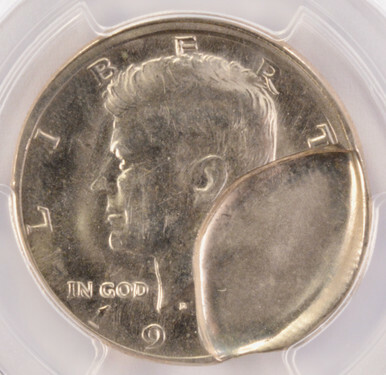
INDENT
An indent is a coin which was partially struck through a planchet. If a planchet is fed into the press with another planchet partially laying on top of it, when it is struck there will be an unstruck, blank area where that planchet was laying on top of the coin (an indent.)
An indent can occur on either side of the coin, but is far more often found on the “up” side of the coin in a coining press.

Off-Center
An off-center is a coin which has its design struck off of the planchet. In order to quality as an off-center, there must be design missing on at least one side of the coin, and it also must be struck out of collar (no reeding on the edge except perhaps minor traces.) Diagnostics include
The above coin is an off-center buffalo nickel.

STRUCK THRU
A struck thru is an error that occurs when something (it can be anything) comes between the die and the planchet when the coin is struck. The result is a "impression" of "whatever" the coin was struck through, into the coin's surfaces. This can be anything, but some of the most common struck through items include grease, cloth fibers (on proof coins), or random pieces of metal from other planchets. Scarcer struck throughs are from items such as washers, colored plastic, screws, or cloth.
STRUCK THRU: RETAINED
If a strike thru (see definition) has the item retained, that is "stuck to or with" the coin, it is considerably more valuable and always much scarcer. Generally, strike thru errors do not have the item retained, and there are probably over 100 struck thru coins existing for every 1 that is retained. Items retained can include anything that can fit between and be struck into a coin. Most often, retained struck thru coins are found with pieces of plastic, grease, pieces of metal, slag, or fragments of planchet material. Numerous other examples exist, however.


UNIFACE STRIKE
this is a coin which was struck through another coin, so that no design is present. It is a “100% indent” effectively. This can occur when two planchets are fed into the press at the same time, and they are struck against each other. When struck, one side will be "uniface", which is to say, it will have no design, and they other side will have a very strong strike.
